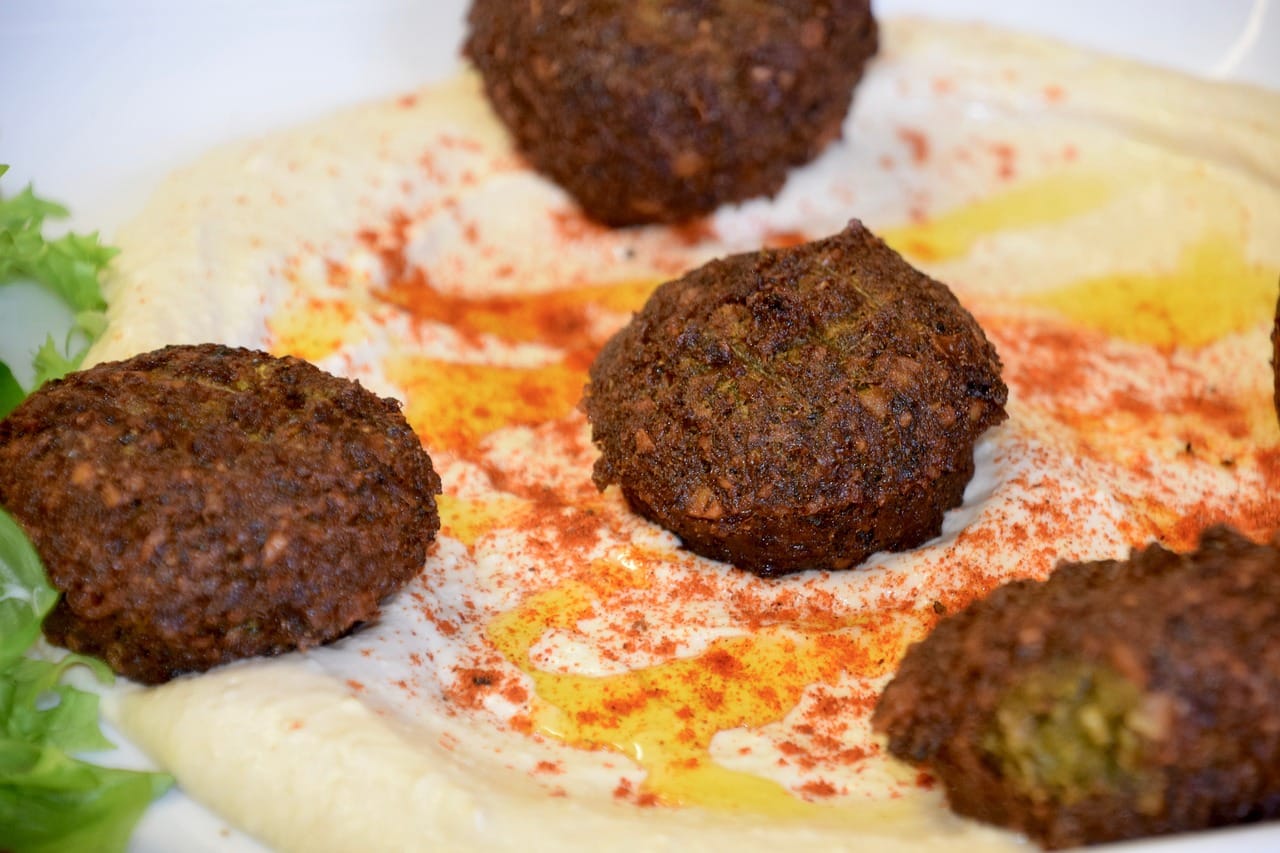
Falafel, a well-known dish from the Middle East, has become a global sensation. This deep-fried ball or patty made from ground chickpeas or fava beans is often served in a pita and garnished with salads, pickled vegetables, hot sauce, and tahini-based sauces. It’s not just about the taste; falafel also carries cultural significance and history.
Our team at Remitly created this guide as part of our series that celebrates the traditional foods of our global customers.
The Origins of Falafel
The exact origins of falafel are debated. Some believe it originated in Egypt, where it was called “ta’amiya” and made from fava beans. Others argue that it came from the Levant region—modern-day Lebanon, Jordan, Syria, Palestine, and Israel—and was originally made with chickpeas.
Regardless of its beginnings, falafel spread throughout the Middle East due to its affordability and delicious taste. Over time, each region added its unique twist to this humble dish.
Ingredients and Preparation of Falafel
The primary ingredients for traditional falafel are chickpeas or fava beans—or sometimes both—mixed with herbs like parsley and cilantro for color and flavor. Spices such as cumin and coriander add depth to the taste profile.
To prepare falafel, soak dried chickpeas overnight then grind them together with onions and garlic. Add herbs and spices before shaping into balls or patties for deep frying until golden brown. The result is a crispy exterior encasing a fluffy interior—a delightful contrast in textures.
Variations of Falafel Across Israel
In Israel—a country where falafel is deeply ingrained in the culinary culture—you’ll find variations across regions reflecting local tastes. For instance, some places use more garlic while others prefer additional herbs.
One popular variation includes stuffing the center of the falafel ball with onions sautéed with sumac before frying—an unexpected burst of tangy flavor. Another variation is green falafel, where the amount of herbs in the mixture is increased, giving it a vibrant color and fresh taste.
The Role of Falafel in Israeli Cuisine
Falafel plays a significant role in Israeli cuisine. It’s often enjoyed as street food, served from stalls or food trucks. It’s also a common dish at home and for celebrations.
In Israel, falafel has transcended its status as mere sustenance—it’s a symbol of national identity. Despite its diverse origins, Israelis have embraced falafel as their own, reflecting the country’s multicultural society.
How to Enjoy Falafel: Traditional Serving Suggestions
Traditionally, falafel is served inside a pita bread with salads and pickled vegetables. A drizzle of tahini sauce adds creaminess while hot sauce provides heat for those who prefer it spicy.
Another way to enjoy falafel is on a platter with hummus and tabbouleh—a refreshing parsley salad. This combination offers an array of flavors and textures that complement each other beautifully.
Making Your Own Falafel: A Basic Recipe
Making your own falafel can be rewarding. Start by soaking dried chickpeas overnight then grind them with onions and garlic until coarse—not too smooth or too chunky. Add parsley, cilantro, cumin, coriander, salt, and pepper before shaping into balls or patties for deep frying.
Remember to heat your oil properly—too hot will burn the outside while leaving the inside raw; too cool will make your falafels greasy. Aim for golden brown perfection—a crispy shell encasing a soft interior.
The Global Influence and Adaptation of Falafel
Falafel has traveled far beyond its Middle Eastern roots to become appreciated worldwide. In Europe and America, it’s often seen as a vegetarian or vegan alternative to meat-based fast food.
As falafel has spread, it’s been adapted to suit local tastes. For instance, in the UK, falafel is sometimes served with tzatziki—a Greek yogurt and cucumber sauce—while in India, it might be spiced with curry powder.
Exploring the Future of Falafel
The future of falafel looks promising. As more people embrace plant-based diets, this protein-rich dish is gaining popularity. Innovations like baked or air-fried falafels cater to health-conscious consumers without compromising on taste.
Moreover, chefs worldwide continue to experiment with falafel—incorporating unconventional ingredients or serving it in novel ways. This humble dish has come a long way from its Middle Eastern origins—it’s now a global culinary phenomenon that continues to evolve and delight palates around the world.
A Simple Falafel Recipe
Making falafel at home can be a fun and rewarding experience. Here’s a basic recipe to get you started.
Ingredients:
- 1 cup dried chickpeas
- 1/2 large onion, roughly chopped (about 1 cup)
- 2 tablespoons finely chopped fresh parsley
- 2 tablespoons finely chopped fresh cilantro
- 1 teaspoon salt
- 1/2-1 teaspoon dried hot red pepper
- 4 cloves of garlic
- 1 teaspoon cumin
- 1 teaspoon baking powder
- 4-6 tablespoons flour
- Soybean or vegetable oil for frying
Preparation Steps:
- Place dried chickpeas in a bowl and cover with cold water. Allow to soak overnight, then drain.
- In a food processor, combine drained uncooked chickpeas, onions, parsley, cilantro, salt, hot pepper, garlic, and cumin. Process until blended but not pureed.
- Sprinkle in the baking powder and add enough bulgur or flour so that the dough forms a small ball and no longer sticks to your hands.
- Turn into a bowl and refrigerate for several hours.
- Form the chickpea mixture into balls about the size of walnuts.
- Heat oil in a deep pot or wok and fry falafel balls until golden brown (5 minutes). Serve hot.
The Broader Cuisine of Israel
Israeli cuisine is as diverse as its population—a melting pot of flavors from North Africa, the Middle East, Eastern Europe, and the Mediterranean. It draws evident influence from the culinary traditions of its neighboring countries, including Lebanon, Syria, Jordan, and Palestine.
Hummus: A Staple Dish
Hummus is an integral part of Israeli cuisine—often enjoyed as an appetizer or side dish. Made from mashed chickpeas blended with tahini sauce, olive oil, lemon juice, garlic—and sometimes spices—it’s a creamy, flavorful spread or dip.
Shakshuka: A Breakfast Favorite
Shakshuka is a popular breakfast dish in Israel. It consists of eggs poached in a sauce of tomatoes, chili peppers, onions, and spices—often cumin. It’s typically served with bread to mop up the delicious sauce.
Israeli Salad: Fresh and Vibrant
Israeli salad—also known as “Arab salad” or “chopped salad”—is made from diced tomatoes, cucumbers, onions, and bell peppers. Dressed with fresh lemon juice and olive oil—it’s a refreshing accompaniment to many meals.
Sabich: An Iraqi Influence
Sabich is an Israeli sandwich originally brought by Iraqi Jews. It includes fried eggplant, hard-boiled eggs, hummus, tahini sauce, Israeli salad—and sometimes pickles and amba (a tangy mango pickle)—all stuffed into a pita bread.
These dishes represent just a fraction of the rich tapestry that is Israeli cuisine—a culinary tradition that continues to evolve while staying true to its diverse roots.
Visit the homepage, download our app, or check out our Help Center to get started.
